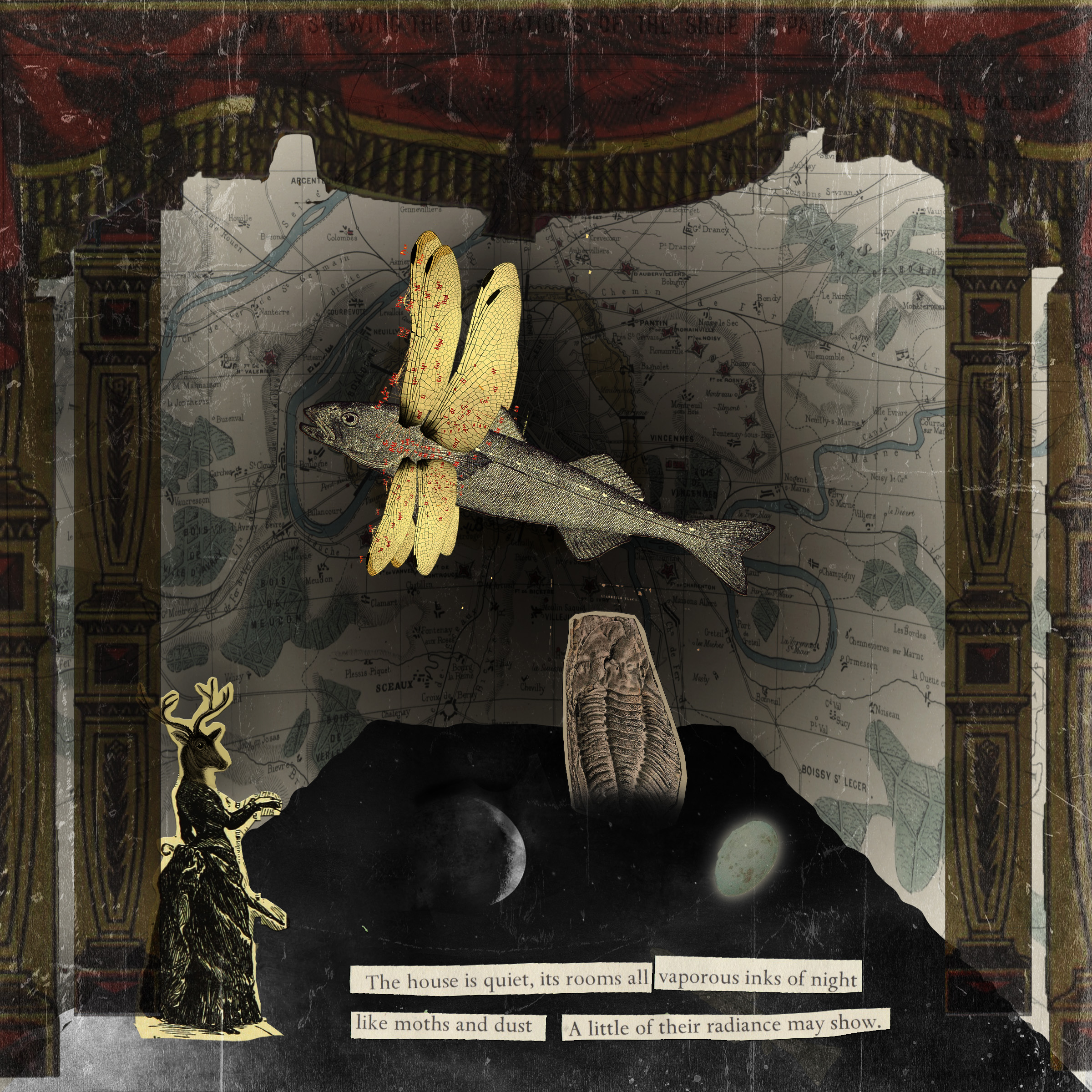I’m frequently asked to describe what I think of as visual poetry (or Vispo) so I thought I’d write a blog post about it. For me, visual poetry works in an intersection between the visual arts and poetic texts. I once heard ‘poetry’ described as a kind of giant festival. The festival is full of brightly coloured tents – room for all styles and everyone. Visual poetry lives in a rather beautiful tent in a corner which is next to the visual art festival.
I’ve watched visual poetry grow over the last few years, too. Perhaps this is because of a move towards online content which means that editors are eager to have beautiful visual for their publications. Editors are also frequently excited to explore the possibilities of different media. It’s a larger tent now, perhaps even with its own sandwich van.
From found poetry to erasure poetry
And within the ‘visual poetry’ tent are different mediums and styles. From concrete poetry through to found poetry that takes the form of text overlaid on images (found poetry can be severely text-based or make use of the collage aspect of cut-ups visually). And then there’s erasure poems (check out Sarah J Sloat’s work, and Mary J Ruefle, and Chase Berggrun’s RED.
And not to forget Oulipo, which often has visual elements- there’s a wonderful article by Michèle Audin about Oulipo and an Oulipo meeting here through to some kinds of haptic poetry, Vispo is a fluid subject and subject to a poet/creative’s choice as they want to identify themselves with that label (or not)…
Collage and visual poetry
Within the visual arts, collage seems to have a natural affinity with visual poetry. But again, not all collage artists are visual poets – and not all pairings of image and text are visual poems either – some are straightforward illustration, some may be ekphrastic (text written to an image).
I think that visual poetry often (not always) has some shared characteristics:
- Vispo often uses some surrealist methods or elements. This isn’t surprising as the surrealists were perhaps the first experimenters to communicate their work with found and juxtaposed text/images. Well, as an arts practice (not a parlour game).
- It frequently uses the sources it draws from in a very self-aware way. This might subvert them or enhance them.
- It makes use of that elusive fourth dimension, where the image works with the text/text works with the image, but doesn’t just repeat what the text says. Instead, the combination adds either a distinctive dissonance which changes the reading. Alternatively it might enhance one of the existing strands in the image/text (but not all the strands in the text).
Haiga
It’s useful to think about haiga. In haiga the image chosen to work with the haiku often isn’t one that ‘describes’ the same things as the haiku itself. Instead, it works tangentially with the text.
Some visual poetry will privilege the text over the image, some the image over the text. I don’t think there’s a ‘perfect balance’ to seek. Instead, this can change drastically depending on what kind of visual poet you are.
Where to read or publish visual poetry?
There’s a growing interest in visual poetry. I’d check out Sugar House Review’s Sugar Suites, Tupelo Press, Ctrl + V, Petrichor for a start, but there are many more. I send out links to some open calls in my newsletter each month.
